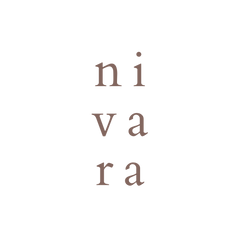Most people think of gold as shiny coins or beautiful jewelry, but beyond the sparkle is a hidden story that is not so bright. This is the story of "dirty gold".
What Is Dirty Gold?
It means gold is mined in ways that hurt people and the environment. Many gold mining practices in many developing countries incur such a heavy toll on workers, communities and ecosystems. Such practices pollute water, destroy forests, endanger wildlife and create hazardous work conditions and child labor too.
Dirty gold is the term that has been coined to describe gold sourced in ways that have these impacts which contradicts the facts like pure and precious metals which we usually associate with luxury.
The Problem with Dirty Gold
Dirty gold is a problem due to the significant issues it causes. Let's see the major problems with dirty gold:
- Environmental Destruction
Open cast mining is a process which involves digging large holes into the earth. They destroy their habitats, causing a full-scale deforestation as well as killing trees and wildlife.
- Water Pollution
Dirty gold is one of the big issues since it involves poisoning rivers, lakes, and groundwater through chemicals used in mining. Cyanide and mercury are examples of toxins and are known to travel long distances from the mining site, affecting ecosystems and drinking water supplies. Communities living near these mines are exposed to these toxins, exposing them to health issues and harming agriculture, fish, and other sources of food.
- Violations of Human Rights
Gold mining is characterized by conditions of work that are extremely dangerous, slaves, and even worse, child labor. Very low wages are the norm, but miners often work in extreme hazardous conditions. This particularly applies to small-scale or so called "artisanal" mining, which is usually a bit uncontrolled.
- Impact on Indigenous Peoples
Most gold mines are found in remote areas, and it is usually where the indigenous communities have lived for many years. Some of them are forced away from their land, thus losing their homes and lives. Other times, they are kept but their environment is so drastically changed leading to scarcity of clean water and natural resources.
- Carbon Footprint
All these processes involved in mining, transporting, and even refining gold are sources of greenhouse gases that contribute to the increase in climate change levels. The heavy carbon footprint of every piece of dirty gold is therefore amplified by the energy-intensive mining activities which use non-renewable sources.
How can you help?
While this might be a huge issue, some things that you can do to reduce the demand on dirty gold and show your support for more ethical and sustainable practices are:
- Use responsibly sourced or recycled gold
- Support jewelers who are dedicated to sustainability
- Reduce, reuse and repurpose gold
- Educate yourself and spread awareness about it
- Support organizations that are working to clean up the gold industry
- Ask questions when buying gold
Gold has traditionally been associated with beauty, wealth and love. Let us therefore cooperate for gold also to mean responsibility, ethics and care for the world. Wisely choose and remember that every piece of jewelry which uses ethical gold is a step towards a better and more sustainable world. Change will take time, but every small action inches us closer to a cleaner and brighter future in the gold industry and for our earth.




Leave a comment